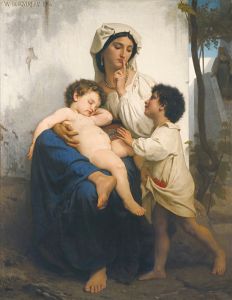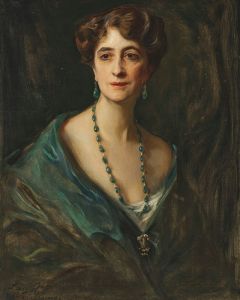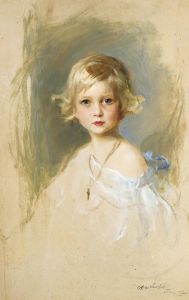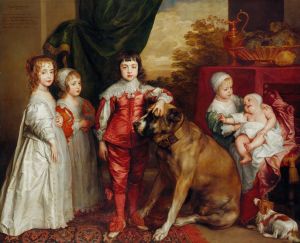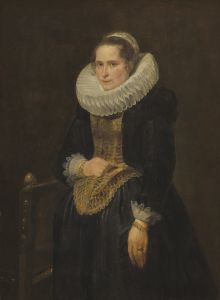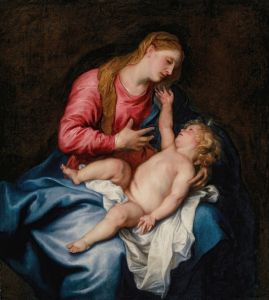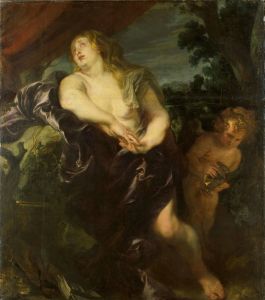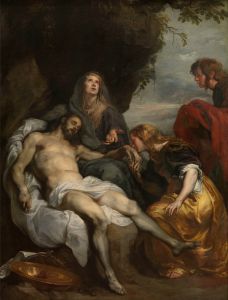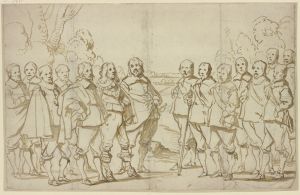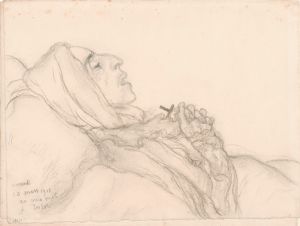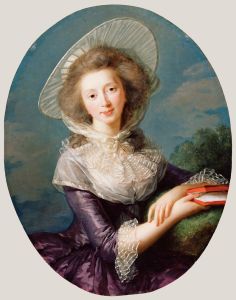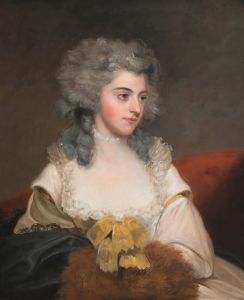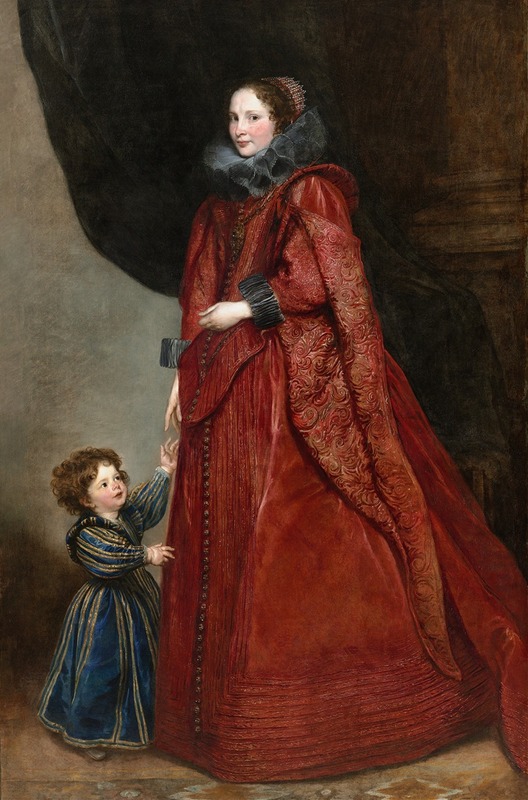
A Genoese Lady with Her Child
A hand-painted replica of Anthony van Dyck’s masterpiece A Genoese Lady with Her Child, meticulously crafted by professional artists to capture the true essence of the original. Each piece is created with museum-quality canvas and rare mineral pigments, carefully painted by experienced artists with delicate brushstrokes and rich, layered colors to perfectly recreate the texture of the original artwork. Unlike machine-printed reproductions, this hand-painted version brings the painting to life, infused with the artist’s emotions and skill in every stroke. Whether for personal collection or home decoration, it instantly elevates the artistic atmosphere of any space.
"A Genoese Lady with Her Child" is a painting by the renowned Flemish Baroque artist Anthony van Dyck. Van Dyck, who lived from 1599 to 1641, was a prominent portraitist of his time, known for his ability to capture the elegance and grace of his subjects. This particular work is a testament to his skill in portraying the aristocracy with both grandeur and intimacy.
The painting is believed to have been created during van Dyck's stay in Italy, which lasted from 1621 to 1627. This period was crucial in the development of his style, as he was heavily influenced by the Italian masters, particularly Titian. Van Dyck's Italian sojourn allowed him to refine his approach to portraiture, blending the Flemish attention to detail with the Venetian use of color and composition.
"A Genoese Lady with Her Child" depicts a noblewoman from Genoa, a city that was a significant center of commerce and culture during the 17th century. The Genoese aristocracy was known for its wealth and patronage of the arts, and van Dyck received numerous commissions from these affluent families. The identity of the lady in the painting remains unknown, as is often the case with portraits from this era, where documentation can be scarce.
In the painting, the lady is elegantly dressed, reflecting the fashion and status of the Genoese elite. Her attire is rich and detailed, showcasing van Dyck's ability to render luxurious fabrics and intricate patterns. The child, likely her son, is depicted with a sense of innocence and charm, adding a personal and tender element to the composition. The interaction between the mother and child is subtle yet poignant, highlighting van Dyck's skill in conveying human emotion and relationships.
The background of the painting is relatively simple, ensuring that the focus remains on the figures. Van Dyck often employed this technique to emphasize the subjects' presence and to enhance the overall impact of the portrait. The use of light and shadow in the painting is masterful, creating a sense of depth and volume that brings the figures to life.
Van Dyck's portraits were highly sought after by the European nobility, and his work in Genoa helped establish his reputation as one of the leading portraitists of his time. His ability to capture the essence of his subjects, combined with his technical prowess, made his portraits enduring works of art that continue to be admired today.
"A Genoese Lady with Her Child" is housed in the National Gallery of Art in Washington, D.C., where it remains an important part of the museum's collection. The painting is a fine example of van Dyck's work during his Italian period and offers insight into the cultural and artistic exchanges between Flanders and Italy during the Baroque era. Through this portrait, viewers can appreciate the elegance and sophistication of the Genoese aristocracy, as well as van Dyck's exceptional talent in the art of portraiture.





